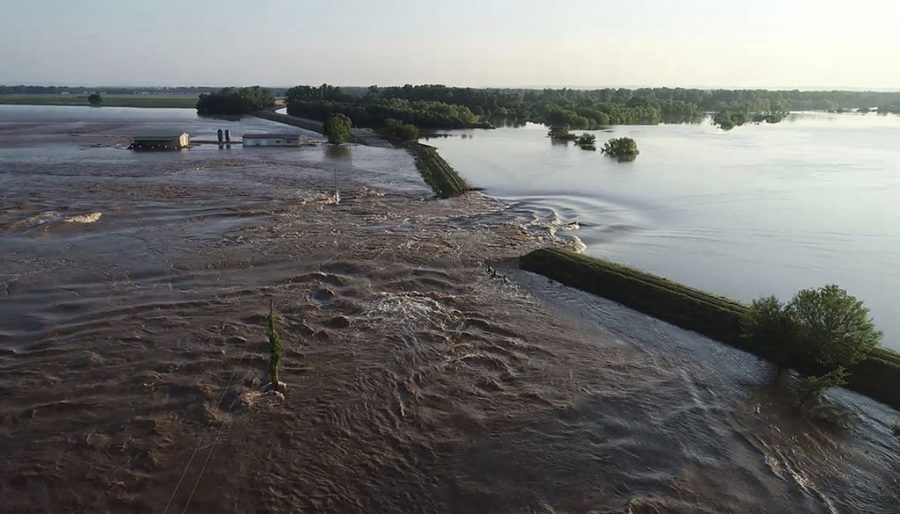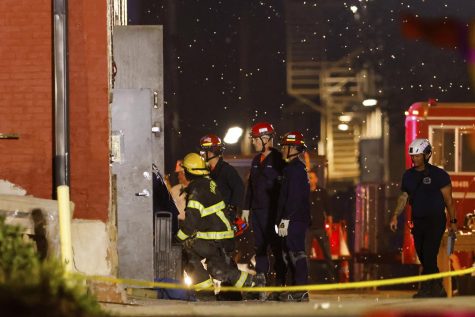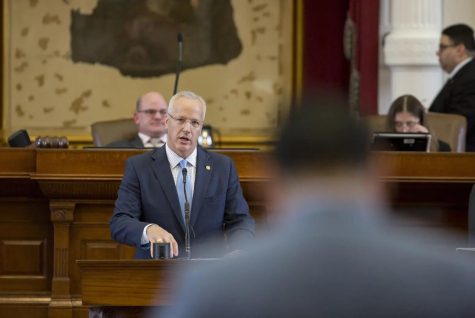Flood risk decreases for Arkansas city as water advance slows
Yell County Sheriff's Department via Associated Press
Water rushes through the levee along Arkansas River in Dardanelle, Arkansas, on May 31, 2019. Officials said the levee breached early Friday at Dardanelle, about 60 miles northwest of Little Rock.
June 2, 2019
LITTLE ROCK, Ark. — Officials from a small Arkansas city where a levee breached say the risk of widespread flooding has abated because the Arkansas River crested without inundating the city, though communities downriver aren’t out of danger yet.
Dardanelle Mayor Jimmy Witt said in a Facebook post Saturday night he thought the city of about 4,700 people “will be ok” after the flow of water toward the community began to slow.
The river on Friday made a 40-foot hole in a levee in Dardanelle, which is roughly 100 miles upstream from Little Rock.
Floodwaters reached nearby rural communities, turning a small community of about 25 people a few miles south of Dardanelle into a temporary island. Some residents had already evacuated though.
On Saturday, officials said they were constructing a temporary levee, calling it a “last ditch effort” to shore up the city’s southern border and predicting that up to 800 homes could be affected by creeping floodwaters.
The threat decreased hours later, as the flow of water through the busted levee slowed.
“The temporary levee is in place on the south end of town, and I believe it could really help,” Witt wrote on Facebook. “I am confident in our preparation to this point.”
By Sunday morning, Dardanelle appeared to be safe. Yell County Office of Emergency Management Director Jeff Gilkey said the river never reached the temporary levee.
Floodwaters have crested in Dardanelle and levels should begin slowly dropping soon, though both Witt and Gilkey warned that more rain could reverse the city’s fortunes.
National Weather Service meteorologist Dennis Cavanaugh said that possible rain in Oklahoma would likely prolong flooding along the Arkansas River, though it probably wouldn’t raise water levels higher than where they crested. Most areas will see the threat of major flooding subside within a few weeks, although the river will likely stay very high through June, he said.
Arkansas is expected to get more rain later in the week, which would increase the likelihood of flash-flooding, Cavanaugh said.
“Normally, the waters would drain pretty quickly into the Arkansas River,” he said, but with the river flooded, water will have nowhere to go.
Downriver communities were preparing Sunday for record-breaking crests. Officials ordered mandatory evacuations for about 500 homes that sit within the levee system in Jefferson County, just southwest of Little Rock. The county’s emergency management director, Karen Blevins, said the evacuation was precautionary and officials have no concerns about the levees.
In North Little Rock, which sits across the river from the capital city of Little Rock, officials went door-to-door Saturday to urge residents in about 150 homes near the river to consider leaving.
Flooding along the Arkansas River in Oklahoma, meanwhile, continued to recede. The weather service said that in Tulsa, the river was at just over 13 feet Sunday morning, which was 10 feet lower than its high point on Wednesday.
On Saturday, President Donald Trump declared a major disaster in Oklahoma and made federal funding available to Muskogee, Tulsa and Wagoner counties, which have been hit by flooding, tornadoes and other storms. Across the state, officials said six people died and 118 were injured from the spring severe weather.
Democratic presidential candidate Beto O’Rourke planned to tour flooded communities near Tulsa on Sunday to see the damage firsthand.













